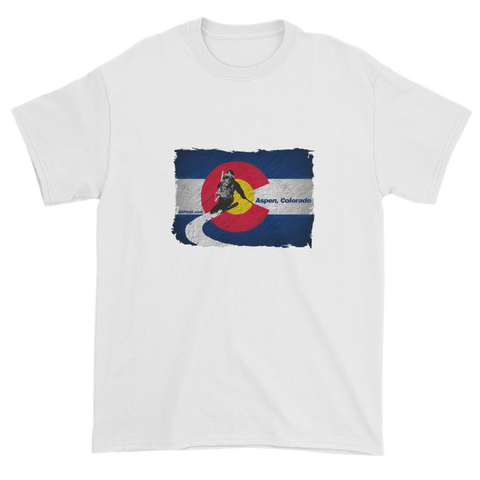
Mike Marolt, Shishapangma Pilot Camp, 2000
I stopped by the Colorado Ski Museum the other day to pick up some gear I used on the first American ski descent of an 8,000 meter peak, and looking at the skis and boots, it really brought back some great memories. But as I checked them out, it also came back loud and clear the advancements that have taken place in AT ski gear since we skied Shishapangma back in 2000.
Back From the Archives, Ski Gear Used on First American Ski Descent from Above 8,000 Meters, 2000
Today, ski mountaineers take for granted what we have to access the goods these days. Back in 2000, gear was just starting to evolve, and while the gear we used in 2000 was state of the art, there were still questions in your mind. There was literally no technology put into ski design simply because there was no market. Ski manufacturers took middle of the line rental ski technology and slapped extreme titles on the top skins in an effort to manufacture the only concern of the day, weight. They didn’t use high tech carbons and metals like titanium to enhance performance which was badly needed, especially up high where snow is generally super hard and icy. So what you had was a fancy short pair of very soft wood skis. They were lighter than your on-mountain skis, but had little or no performance. And while they were lighter than normal skis, they were still massively heavy compared to modern skis today. It was sketchy at best and you went with them only because they were slightly lighter, and the only thing available.
Boots were a massive issue. New models would come out and the comparison was always made to whether or not you could ski bumps and crud on any black diamond. They walked and climbed ok, but they were soft….soft forward, to the side, and often would crease backward if really putting them to the test. Boot manufacturers used soft, light plastic, and again, didn’t have the engineering in place to make them ski. Approach was far more the objective than skiing, and so with the skis, you were forced into a survival mode to swish your way down the mountain, hanging on for dear life even in utilitarian mode.
Modern Gear in Action. Lighter, Stiffer, Way Better!
The bindings were plastic and brakes were not manufactured. DIN for AT bindings was non existent, but comparing them to later models with DIN settings exceeding “any AT binding to date” in marketing at 8, first generation bindings were probably around an equivalent of DIN 5. You would crank them down as tight as a vice and two hands could possibly make them go, effectively locking them down to prevent a pre release. Pre release was a massive fear, and for example when I skied the north ridge of Everest on ice and rough boiler plate, technique was drastically employed to ski like a complete beginner; a pre release would have been without question fatal. The snow was too hard to self-arrest, and the ridge fell off thousands of feet to both sides.
Today, skis are so incredibly light, my old frame of mind is skeptical before I jump on them. Carbon fiber and titanium make for a combination of feather light skis that are stiff enough to handle all snow conditions….well. Manufacturers have incorporated design, width, and shape to make AT performance skis. For this old dog, it’s mind blowing.
Dynamic Turns on Modern AT Gear...
AT boots today are so light and stiff that most people who have any inclination for off piste or even side country skiing use one pair of boots for all their skiing. My Fischer Trans Alp boots are in my view the single greatest advancement in the AT skiing game.
Today, bindings weigh a fraction of what we used in 2000, with DIN settings as high as 15. You can slam bumps, huck cliffs, or ski steep ice couliors, and pre releasing is not even a remote concern. The whole package, today, offers a set up, boots, skis, and bindings, that completely takes all questions out of your mind. The gear is so light that as we have aged into mid life, we are able to continue to plan trips to the highest most difficult peaks on the planet. That’s something that when I skied Shishapangma back in 2000 at age 35 I never imagined. What I have lost in power and endurance at age 50, has more than been made up with gear that has enabled me to not only survive while skiing the highest peaks, but thrive. As I look at that old gear, I am honestly surprised we were able to ski some of the things we did back then.





